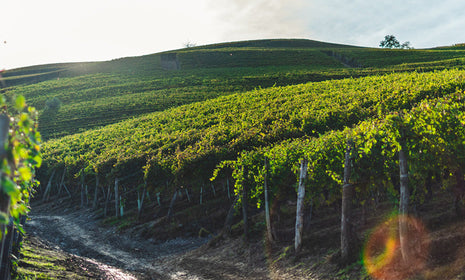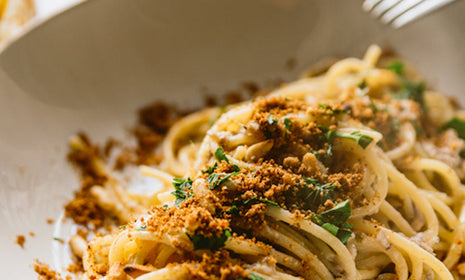Stretching into the gentle embrace of the Adriatic and Mediterranean Seas, Italy’s heel is fortuitously graced with a long sun-drenched coastline and diverse landscapes. With fertile, limestone enriched soils, Puglia’s hot dry climate makes it ideal for growing wine grapes. Cooled by a steady saline breeze that blows off its extensive coastline, the vines are tempered to deliver exquisite and balanced wines that are fruit forward and ripe with smooth tannins.

REDS
Producing 108 million cases of wine per annum, Puglia is now Italy’s second largest wine region, and has four certified DOCGs, twenty-eight DOCs and six IGTs. In the same way that balsamic vinegar from Modena is protected under careful policing of its production, DOP (Denominazione d’Origine Protetta) certifications are classifications that help both protect heritage Italian winemaking practices according to regions, as well as aid consumers in identifying and understanding the quality of wines that they’re purchasing based on the same parameters. DOCGs (Denominazione di Origine Controllata e Garantita) not only guarantee the geographical sourcing of grapes, but also guarantee the highest classification of control and quality, while DOCs (Denominazione di Origine Controllata) certify that the wine is made within the specified parameters of its region, and IGT (Indicazione Geografica Tipica) indicates that the grapes used to make the wine come from a specified geographical zone. These certifications help the consumer to trust the quality of their purchase and protect heritage practices and heirloom varieties according to each certified wine producing region in Italy.
World renowned for fruit forward red wines with balanced acidity and tannins, Puglia has been producing bold, beautiful red wine for over 8,000 years. Among the many grapes produced in this sun-soaked region, its most celebrated grape varieties include Sangiovese, Negroamaro and Primitivo.

Sangiovese
Grown, harvested, and fermented into wine since the Roman Empire, Sangiovese grapes produce medium bodied wines that are tannic and acidic with notes of red stone fruits and dark berries. Famously used in Chianti blends, most Sangiovese grapes grown in Puglia are sold internationally for blends. However, Sangiovese is used in Puglia to make both savory red table wines, as well as beautiful Rosato wines that are excellent alongside an herbaceous and savory pizza like our Mediterranean pizza, grilled steak, or artichokes. Some Sangiovese wines from the region that we would suggest trying include: Orta Nova DOC and Santoreggia Sangiovese.
Negroamaro
Highly drought resistant, Negroamaro grapes likely arrived in Puglia during Greek rule. The grape has since thrived in the region, where it is a leading varietal for the production of high quality red wines. Producing bold flavors of ripe plum, black berries, and black cherry with finishing notes of cinnamon and clove, Negroamaro grapes are known for their fruit-forward and plump flavors, low acidity, and soft tannins. Pair with smoked pork shoulder ragu, slow roasted chicken, or balsamic marinated steak. Beautiful when paired with food, some of our favorite Negroamaro wines from Puglia include: Salice Salentino DOC Rosso, Negroamaro di Terra d’Otranto DOC Rosso or Rosato, and Brindisi DOC Rosso or Negroamaro.
Primitivo (or California Zinfandel)
Puglia’s most celebrated grape since its arrival in the 18th century, primitivo, meaning “early ripening,” are harvested in August. Their higher sugar content produces bold, jammy, and rustic wines with a higher alcohol content that have notes of fresh figs and blueberries. Its heavier characteristics lend primitivo to pair well with spiedini alla siciliana, slow-braised ossobuco, and short rib lasagna. We recommend trying: Primitivo di Manduria and Colline Joniche Tarantine DOC Primitivo.
WHITES
Though Puglia is largely recognized for the bold fruit-forward reds developed by its hot sun, the region’s white wines are not to be overlooked. Gaining minerality and fresh, acidic qualities from the limestone rich soils, Puglian white wines are surprisingly bright and pair nicely with the flavors of the Mediterranean.

Bombino Bianco
This resistant white grape yields high bunches and produces soft, subtle wines that have delicate minerality, citrus, and floral notes, making it ideal for blends. Where most wine grapes are not eaten, Bombino Bianco are also dried into raisins and used in Puglian cuisine. Pair it with fresh summer tomato salads, involtini di pesce spada, or crostini with whipped ricotta. We recommend the Rivera “Marese” Bombino Bianco Castel del Monte or the Progetto Calcarius 40.08 Bianco Puglia.
Greco Bianco
With a large range of Greco grape varietals grown throughout Italy, there’s often debate as to the true identity of a Greco varietal. When correctly identified, this beautiful Grecian grape is known to produce wines with widely varied characteristics. From highly acidic, dry, grassy and earthy wines to sweet, plump ones Greco Bianco grapes are famously versatile. Enjoy with olive oil poached Halibut or wild mushroom risotto. Be sure to try L’archetipo Grego Bianco from Puglia.
Verdeca
Commonly used to make vermouth, this rare Apulian white grape produces vegetal, highly acidic wines with bergamot and herbal notes as well as a mineral base. While often used in blends, pure Verdeca wines are crisp and acidic. They pair well with pasta con le sarde, spaghetti alla vongole, or a dry salty cheese. We recommend trying Flaminio Verdeca IGP, Bianco d’Alessano, and Locorotondo DOC.
Whether you're building out your wine cellar, looking to try something new, or planning a wine tour through Italy, Puglia is a region you cannot overlook. With bold flavors and soft tannins, their red wines pair exceptionally well with food, and their acidic and bright whites are equally delicious with a meal as they are by the side of the ocean.





Be the first to comment